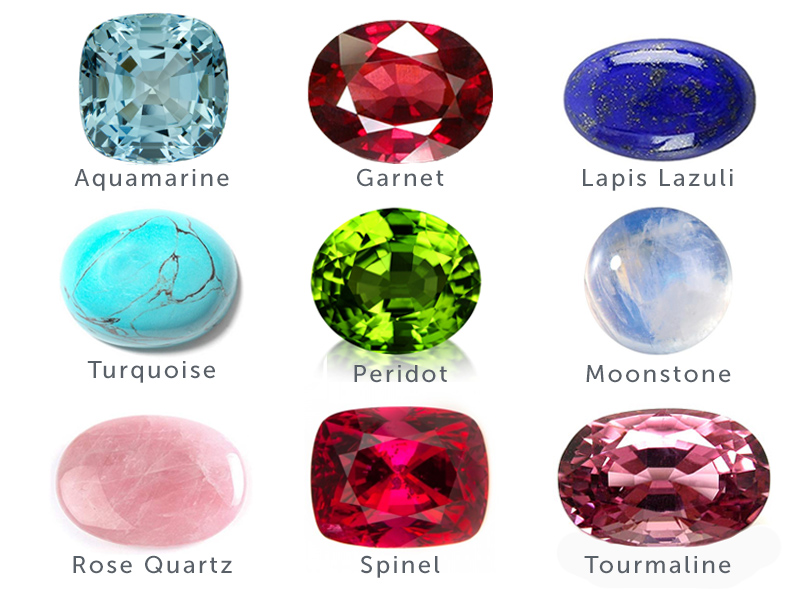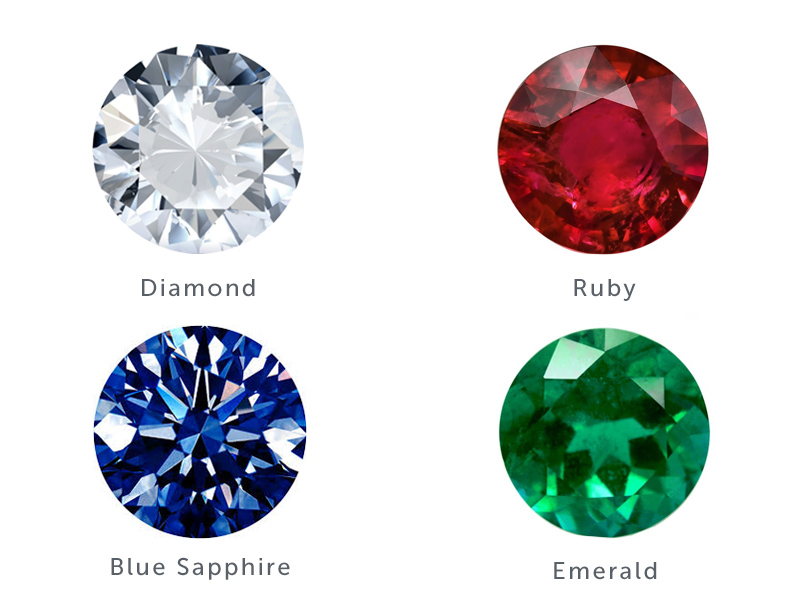Gemstones were first classified, considering their value at that time, into categories of "precious" or "semiprecious" in the mid-1800s. These terms quickly become popular and were used throughout the world. Even today, these terms remain in common usage in printed materials, on websites, and in discussions throughout the gemstone and jewellery industry.
However, this categorisation is not always correct today, since the "value" parameter is not the only criteria on which experts rely to in order to evaluate a stone. The quality, the rarity, the provenance are taken into consideration as well.
"Precious stones" is a name that is usually used in reference to diamonds, rubies, emeralds and sapphires.Traditionally, these four precious stones have been the most expensive and sought after stones. Sometimes pearls, opals or jades were listed as precious gemstones, but more often they are considered semi-precious.
Every other gemstone that isn’t one of those four is considered to be semi precious. The list goes on and on, but some of the more common ones are: alexandrite, agate, amethyst, aquamarine, garnet, lapis lazuli, moonstone, opal, pearl, peridot, rose quartz, spinel, tanzanite, tourmaline, turquoise and zircon.
Some of these can be worth much more than a precious stone. As an example, many natural pearls garner huge prices, often worth more than a low quality precious diamond, ruby, emerald or sapphire. Spinels are another example. Additionally, many semi precious stones can be more rare than some of the precious. Demantoid garnets or tsavorite garnets and many other semi precious gemstones are hard to find, harder to mine and produced in much lower qualities than the precious gemstones.

Unfortunately, classifying stones into "precious" and "semiprecious" has led many people to believe that "precious stones" are more important and more valuable than "semiprecious stones". But in reality, the word "semiprecious" is irreverent, misleading and confusing.
Hence, as a person who is interested in purchasing in gemstones, you should not be influenced by the names "precious" or "semiprecious". Instead you should focus on what gemstone appeals to you, suits your intended use, and has a price that you are willing to pay. The names "precious" and "semiprecious" are old and arbitrary designations that are not very meaningful in today's market.
We hope that you found this information useful!
In case of any questions, please reach out to us - happy to help!

